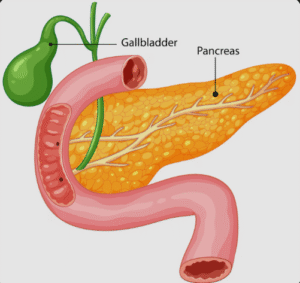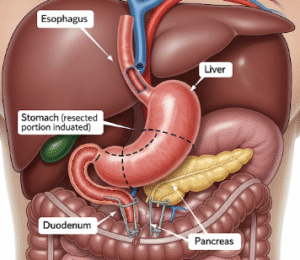Overview
Fabry disease is a rare inherited lysosomal storage disorder caused by a deficiency of the enzyme alpha-galactosidase A, leading to the accumulation of a fatty substance called globotriaosylceramide (Gb3) in the body’s cells. This buildup damages blood vessels and organs, especially the kidneys, heart, and nervous system. In Korea, Fabry disease is considered an orphan disease, but specialized centers provide advanced diagnostics and long-term management, including enzyme replacement therapy (ERT) and supportive treatments. Awareness and genetic counseling are increasing to ensure early detection and proper care for affected families.
What is Fabry Disease?
Fabry disease is an X-linked genetic disorder, which means it is more severe in males but can also affect females. The defective GLA gene leads to reduced or absent alpha-galactosidase A enzyme activity. Over time, the progressive buildup of Gb3 causes multi-organ dysfunction. In Korea, Fabry disease is managed in tertiary hospitals with genetic medicine departments and rare disease programs.
Symptoms
Symptoms vary but may include:
- Burning pain in hands and feet (acroparesthesias)
- Decreased ability to sweat (hypohidrosis)
- Skin lesions (angiokeratomas)
- Corneal opacity (clouding of the eyes)
- Hearing loss or tinnitus
- Kidney dysfunction (proteinuria, chronic kidney disease)
- Heart problems (left ventricular hypertrophy, arrhythmia)
- Stroke or transient ischemic attacks at a young age
- Fatigue and gastrointestinal issues
Causes
- Genetic mutation in the GLA gene located on the X chromosome
- Enzyme deficiency results in the accumulation of Gb3 in lysosomes
- Inherited in an X-linked pattern (males usually more severely affected, females variable symptoms due to random X-inactivation)
Risk Factors
- Family history of Fabry disease
- Male gender (higher risk of severe disease progression)
- Carriers (females with GLA mutations) may still experience complications
Complications
If untreated, Fabry disease can cause:
- Progressive kidney failure (may require dialysis or transplant)
- Heart disease (arrhythmias, cardiomyopathy, heart failure)
- Stroke at an early age
- Hearing and vision impairment
- Reduced life expectancy
Prevention
There is no way to prevent Fabry disease since it is genetic. However, prevention strategies in Korea include:
- Genetic counseling for families with a history of Fabry disease
- Carrier testing and prenatal genetic diagnosis
- Newborn screening programs (limited but under research in Korea for early detection)
Treatment Options in Korea
Diagnosis
- Enzyme activity test (alpha-galactosidase A levels)
- Genetic testing (GLA gene analysis) to confirm mutation
- Urine and blood tests for Gb3 accumulation
- Organ function assessments (heart, kidney, nervous system)
Medical Treatments
- Enzyme Replacement Therapy (ERT): The standard treatment in Korea, available at tertiary hospitals such as Asan Medical Center and Seoul National University Hospital. ERT helps reduce Gb3 buildup and slows disease progression.
- Chaperone therapy: For patients with amenable mutations, oral migalastat is sometimes used.
- Supportive medications:
- ACE inhibitors/ARBs for kidney protection
- Anti-arrhythmic drugs for heart issues
- Pain management (gabapentin, carbamazepine)
Surgical or Advanced Therapies
- Kidney transplantation for patients with end-stage renal disease
- Pacemaker or implantable cardioverter-defibrillator (ICD) for severe cardiac arrhythmias
Rehabilitation and Support
- Physical therapy for pain management
- Psychological counseling for coping with chronic illness
- Patient support groups in Korea for rare diseases
- Nutritional guidance for kidney and heart health













